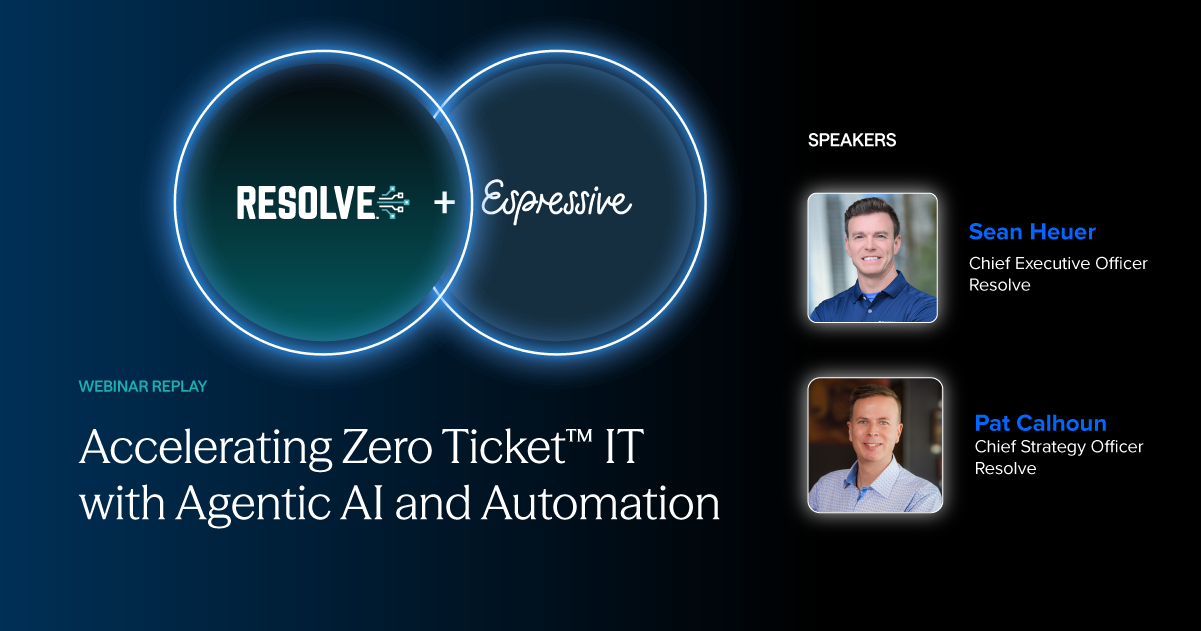
Automation Everywhere: How the Role of the CIO is Morphing as Costs Tighten
Subscribe to receive the latest content and invites to your inbox.
Ah, another blog about the "evolving" role of the CIO. Buckle up, because we're about to dive into the world of "transformation," "digital" this and "innovation" that.
But instead of fluffing up the usual jargon, let's get real about what it takes for a CIO not just to survive but to excel as costs tighten and automation takes over.
The Same Old Story: Buzzwords Galore
You've seen it a thousand times: "The role of the CIO is evolving!" "Digital transformation is the key to success!" "Innovation is at the heart of our strategy!"
Yes, we've all read these lines ad nauseam. But let's cut through the buzzwords and talk about the real pressures and challenges CIOs face today.
The Real Deal: Automation is Unavoidable
Automation isn't just the latest tech fad—it's reshaping industries from top to bottom. Sure, it promises efficiency, cost savings, and productivity boosts, but it also brings a hefty dose of reality to the table.
Here's how automation is shaking things up for CIOs:
Opportunities (Yes, There Are Some)
- Efficiency and Cost Savings: Automate the mundane, and suddenly your team has more time for the fun stuff, like actually thinking and innovating.
- Enhanced Productivity: When robots do the boring bits, humans can finally do the work that requires critical thinking. Take the robot out of the human.
- Data-Driven Decisions: Automation spits out mountains of data, which, if used correctly, can guide smarter decisions and strategic moves.
- Scalability: Need to expand quickly? Automation can help, as long as you can handle the initial chaos.
Where Most Get Stuck
- Integration Nightmares: Remember those smooth demos? Reality check: integrating new tech with old systems is like trying to teach a dinosaur to dance.
- Workforce Anxiety: Automation can mean job displacement. Managing this transition delicately is like defusing a bomb with a butter knife.
- Security Paranoia: With more automation comes more targets for cyber threats. Enjoy sleepless nights worrying about your organization's vulnerabilities.
The CIO's New World: Less Glamour, More Grind
Let's get one thing straight: the CIO role isn't about looking cool with the latest gadgets. It's about navigating a minefield of expectations, tech upheavals, and budget constraints. We get what you're really dealing with!
Strategic Leadership (Translation: Herding Cats)
You're now expected to be a strategic leader, aligning tech initiatives with business goals. Sounds glamorous, right? It's more like herding cats while balancing on a tightrope.
Innovation and Digital Transformation (AKA Organized Chaos)
Your job is to foster innovation. Great. Now, figure out which of the latest tech trends aren't just passing fads, and then convince the rest of the exec team to get on board. Easy peasy.
Business Growth (You Better Believe It)
CIOs are now expected to drive business growth, not just keep the servers running. This means you need to think like a CEO, a tech guru, and a fortune teller... all at once.
Talent Management (People are your IP)
With automation, the skills your team needs are constantly changing. Keeping up with these demands while keeping your team motivated and engaged is no small feat.
Risk Management (Constant Vigilance)
With automation comes greater risk. If your systems go down, or worse, get hacked, it's on you. No pressure.
Thriving in the Automated Jungle
So, how do you not just survive—but thrive—in this brave new world of automation? Here's the no-nonsense guide:
See the Big Picture
Automation isn't just for IT—it affects the entire organization. Look at how it can improve every aspect of the business, not just your slice of the pie.
Build a Culture of Innovation
Encourage your team to experiment and take risks. Yes, that means things will occasionally go wrong. Embrace it.
Invest in Your People
Automation means your team's skills need constant updating. Invest in training and development, or watch your best people jump ship.
Prioritize Security
Automation increases your attack surface. Stay paranoid, stay vigilant, and invest in the best security measures you can.
Use Data Wisely
Automation gives you data—tons of it. Use this data to make smart decisions, not just to create fancy reports.
Collaborate or Die
Work closely with other C-suite executives. If your automation strategies aren't aligned with the overall business goals, you're setting yourself up for failure.
Real-Life Examples: CIOs Who Get It
Third Largest Retailer Worldwide More than Triples Goal of Hours Saved with Automation
This retailer was looking for a sustainable way to solve several inefficiencies stemming from an overwhelming volume of manual tasks and processes. The company wanted to save costs and hours, augment value with better incident response, and achieve greater return on investment (ROI). And they wanted it to all come from a carefully devised, strategic, and unrushed automation approach.
Automation Benefits
- 1,410 hours saved against a target of 300
- 20 use cases in production
- 30 use cases in their backlog
Fortune 500 Financial Services Leader Reaches $1.4 Million in Cost Savings Using IT Automation and Orchestration
A leading provider of investment and business solutions that supports more than 21,000 financial advisors across the country needed to regain control of IT incidents being routed through the company's IT Service Management (ITSM) team to its Infrastructure and Operations (I&O) team, simplify complicated IT processes, and more quickly and easily scale automation.
Automation Benefits:
- Cost savings of $1.4 million over a three-year period
- An average outage reduction of 20 percent
- An 80 percent average reduction in mean time to resolution (MTTR) for high-severity incidents
- The ability to scale with less time and fewer people
- Greater efficiency across systems, processes, and team productivity
No More Excuses
The role of the CIO has changed, whether you like it or not.
Automation isn't just a tool; it's a game changer. To succeed, you need to move beyond the buzzwords and embrace the reality of what this technology can do. It's time to lead, innovate, and drive your organization forward. No more excuses. Get real, get automated, and get ahead.






